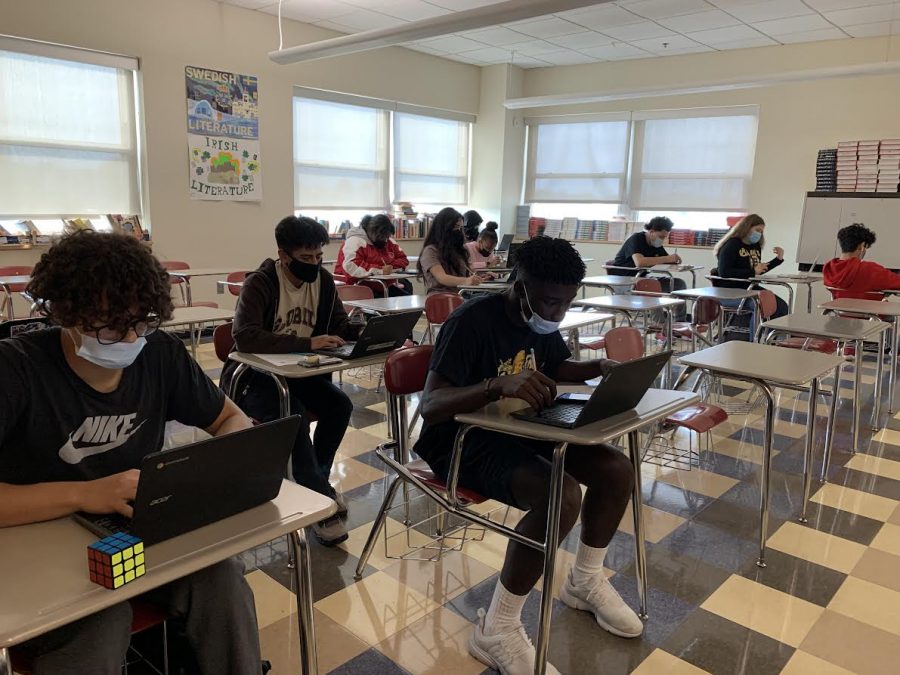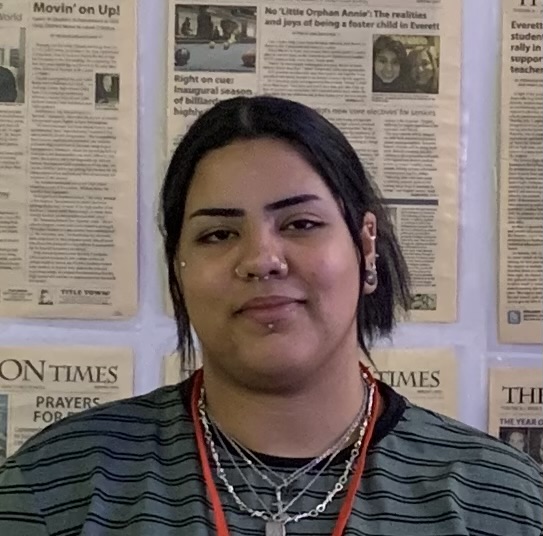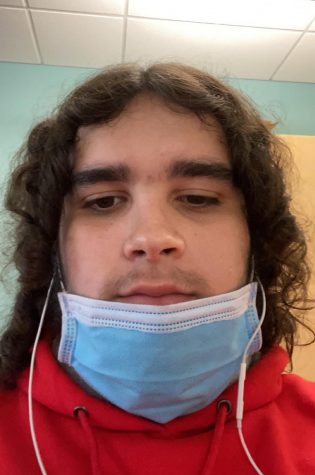Has the pandemic changed the way students participate in class?
After more than a year of remote learning, students more reluctant to speak up during in-person classes
Students in Nicole Wright’s English 3 class work quietly on a group project. As more and more work moves into digital platforms, “talking” begins to look different, sometimes showing up as comments on a Google doc rather than as verbal discussion.
October 31, 2021
It’s no secret that, during the pandemic, students participation rate decreased. Students didn’t have a chance to have a real conversation with their friends. They were uncomfortable to speak to teachers and other students that they might have never met before. They felt uncomfortable talking to students who they have never met before.
Many predicted that the return to in-person learning would be so welcomed after more than a year of remote learning that students would be jumping at the chance to engage in real-life conversations in class.
However, the reality has been more complicated than that, and the transition a little tougher and slower.
Students had different takes on whether participation in class has been more or less this year compared to before the pandemic.
Some noticed that many students are more reluctant to speak up after a year and a half at home on a computer.
“After the pandemic I feel like everyone stopped talking in class,” sophomore Jennifer De Oliveira said.
“Kids have definitely talked less since the pandemic occurred,” sophomore Daniela Lopez said.
“I think it’s because we haven’t been together for so long. We didn’t have our freshman year so it’s practically our first year together,” junior Sophia Sousa said. “Nobody has really had their social skills in the works for over a year so it’s a little harder for people to talk more. Some teachers try to make students talk but the students don’t want to talk. Students aren’t going to go out of their way to talk, nor do they really want to.”
”I do not talk in class because I do not know how to respond to the questions,” junior Julianna Edwards said. “I also thought I would talk now because I’m comfortable, but compared to the pandemic I feel like I talk less than I used to.”
“Some students don’t talk because they are depressed, shy or maybe they just don’t want to talk so teachers shouldn’t force them to,” senior Fabricio Souza said.
“Yea I think people stopped talking in class,” sophomore Jessica Bechirian said. “We were online for a very long time so I guess they are not used to talking in class anymore.
“I think kids are less likely to talk in class now because of the mask system,” freshman Anderson Valle said.
“Personally, I feel like I became a lot less social in participating,” freshmen Logan Spaulding said. “It’s a lot harder now since I am not as used to socializing and stuff.”
On the other hand, some commented that, for them and for others, being cooped up and isolated for so long has led them to participate more than they usually would this year.
“I think I’m more likely to talk since the pandemic, because I haven’t talked in awhile and I feel like I need to get it out,” said sophomore Makenzie Powers, who later added, “I just feel like, if I’m talking, I can express myself and get more participation credit in class.”
“I feel like it depends on what class you’re in. Some kids won’t participate no matter what,” freshman Sidney Valentim said, “but I think yes it definitely has gone up a little bit more. The pandemic affected that in the way, like maybe they feel like expressing themselves a little bit more because they’ve been holding that in for so long.”
“I’ve seen some shy people that, because of the pandemic, have started to speak more,” Valentim said. “A student in my class has always been so shy but for an assignment he started talking a lot and he was the one asking the most questions.”
Some teachers and administrators also weighed in with their observations.
“I feel like kids have talked less. I really do think a lot of students have forgotten how to be students because we’ve been out of school for so long,” sophomore English teacher Dana Oppedisano said. “In a lot of cases I’ve actually had to encourage kids to talk more, even kids who I know talk a lot and have insightful ideas. It’s almost like the mask is making them intimidated.”
“In my group many of them never talked during the pandemic.” said Special Education department head Chris Chase. “Now that we are getting back to our normal routine, many of my students are comfortable enough to speak, answer questions and ask questions, so I would say that I’m not noticing a difference in students not talking in class after the pandemic.
“Some students are not talkers and that has nothing to do with the pandemic. Teachers have the chance to create some opportunities for students to talk to them and to each other,” Chase said.
“Student participation during the pandemic wasn’t great, but I would argue it’s a little worse now,” math teacher Christina Buckley said. “I think students are struggling with how to socialize with each other while wearing a mask.”
“I also think that there was a lot of learning lost, so kids are actually struggling with the content, which is impacting their ability to want to participate in class,” Buckley said. “So overall I would say the morale is low for students across the board. Hopefully it will improve as the year goes on.”
“Some kids haven’t been in school for 19 months, so it’ll take a while for them to adjust,” ELA department head Ryan McGowan said. “A lot of kids are reluctant to speak in class because there’s a part of them that’s afraid that what they say will be mocked or not accepted or wrong in some way.”
“I’m not really in a classroom on a daily basis but I pop into a lot of different ones, and I definitely see a mix,” math department head David Babineau said. “Some kids are really happy to be back in the classroom and participate more frequently as a result, and then some students have gotten into a habit of being on the computer and a little detached from some of the in-person conversations. So I think that participation is huge, I think that’s the number one thing that is going to help students understand the material.”
Students and faculty alike had a few suggestions for how teachers could potentially increase class participation.
“I feel like we should do more group work instead of just getting called out by teachers,” Bechiran said.
“I think the students who don’t talk in class should make more friends. During the pandemic everyone was separated for a long time, so making more friends would make them feel more comfortable to interact in class,” De Oliveira said.
“I think one of the hard things for a lot of students is to adjust to the fact that there’s no substitute for a chat room or a chat box during in-person class,” ELA department head Ryan McGowan said. “I wish we could figure out what that could be. I think some of the teachers are trying to find some of those ways for people to participate, but it’s hard because kids need to get used to being students again.”
“We can increase participation in class is by building relationships,” Babineau said. “If you like the teacher in front of you that’s asking you questions, you’re more likely to answer them. You’re more likely to engage in the conversation and it goes both ways.”
“I know that there are some additional challenges after returning from being out of school for so long,” CMAD and Connections dean Leslie Leblanc said, “but I think that overall students are doing their best.”











Chris COUGHLIN • Nov 8, 2021 at 11:09 am
Good, insightful article! I hadn’t even really considered the fact that 10th graders virtually missed their Freshman year of high school (pun totally intended, i.e. “virtually”). Good to hear student viewpoints on speaking out in class, and some of the various reasons for holding back from participating. Thank you!